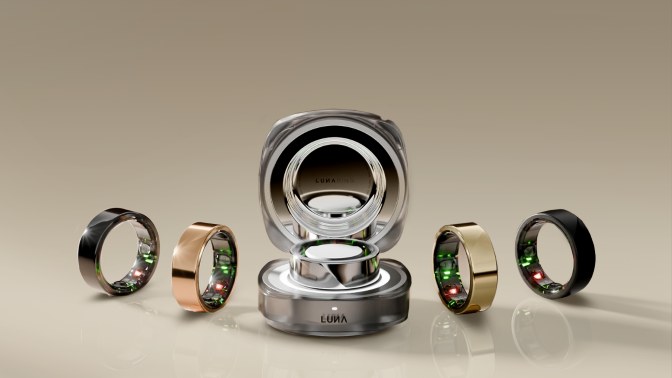
Luna, the forward-looking health-tech company known for rethinking how we track and optimise wellbeing, has officially launched its next-generation smart ring: Luna 2.0. Equipped with a brand-new intelligence layer called LifeOS, the wearable goes beyond simple fitness tracking to deliver real-time, adaptive guidance designed to help users perform, recover, and live better.
The Luna Ring 2.0 is now available worldwide via the company’s website, starting at $300 / £300, or $329 / £329 with the surge charging case. Global demand has already been strong, with pre-orders placed in over 70 countries, and Amazon’s availability is expected to roll out next month.
LifeOS: More Than a Tracker, a Living Intelligence
At the heart of Luna 2.0 is LifeOS, a next-gen software layer that decodes the interaction between body, mind, and environment. Unlike traditional wearables that simply report biometrics, LifeOS interprets those signals in context—turning data into adaptive intelligence.
Some standout features include:
-
Circadian Alignment – Learns your body clock and guides you to hit your daily performance peaks.
-
Contextual Intelligence – Adjusts to lifestyle, routines, and environmental cues.
-
Open & Extensible – Built to integrate additional data streams over time.
-
Trained at Scale – Powered by analysis of over 1 billion sleep events, making it one of the most trained wearable AI systems to date.
-
21+ Day Battery Life – Thanks to a redesigned charging case, Luna 2.0 is one of the longest-lasting smart rings available.

Smarter Wellness, Powered by AI
The Luna Ring 2.0 isn’t just about monitoring—it’s designed to act as an AI wellness assistant that helps you make proactive decisions.
-
AI-Driven Health Scores – Real-time sleep, readiness, and activity scores help you understand daily capacity for performance and recovery.
-
Luna AI 2.0 Assistant – A more contextual, conversational guide that suggests actionable steps for sleep optimisation, movement, and energy balance.
-
Advanced Activity Tracking – Tracks workouts across running, cycling, walking, and freestyle sessions with insights into heart rate zones, effort, and calories.
-
Fertility Tracking – Uses temperature and recovery signals to predict cycle phases and provide personalised insights.
-
Stress Management – Detects stress patterns through HR and recovery metrics, offering actionable feedback.
-
Body Training Balance – Prevents burnout by measuring daily effort against recovery trends.
-
Enhanced Sleep Analytics – Offers deep insights into circadian rhythm alignment, sleep cycles, movement disturbances, and even respiratory performance at rest.
Global Launch and Expansion
Unveiled earlier this year at CES 2025, Luna 2.0 is now stepping onto the global stage at IFA Berlin, with Europe highlighted as a key growth market. The company is also expanding retail and distributor partnerships to accelerate delivery and after-sales service worldwide.
Founder Amit Khatri describes the product as a leap forward:
“Luna 2.0 represents a step-change in what a smart ring can do. With LifeOS, we’re moving beyond passive health tracking into an era where your ring actively helps you make better decisions for performance, recovery, and long-term health.”
The Takeaway
With its combination of long battery life, AI-powered guidance, and deep contextual understanding, Luna 2.0 positions itself as more than a wearable—it’s a proactive health companion. Whether it can truly deliver on the promise of unlocking human potential will depend on how well LifeOS adapts in real-world use, but the ambition is clear: this isn’t just tracking your life, it’s helping you live it smarter.
